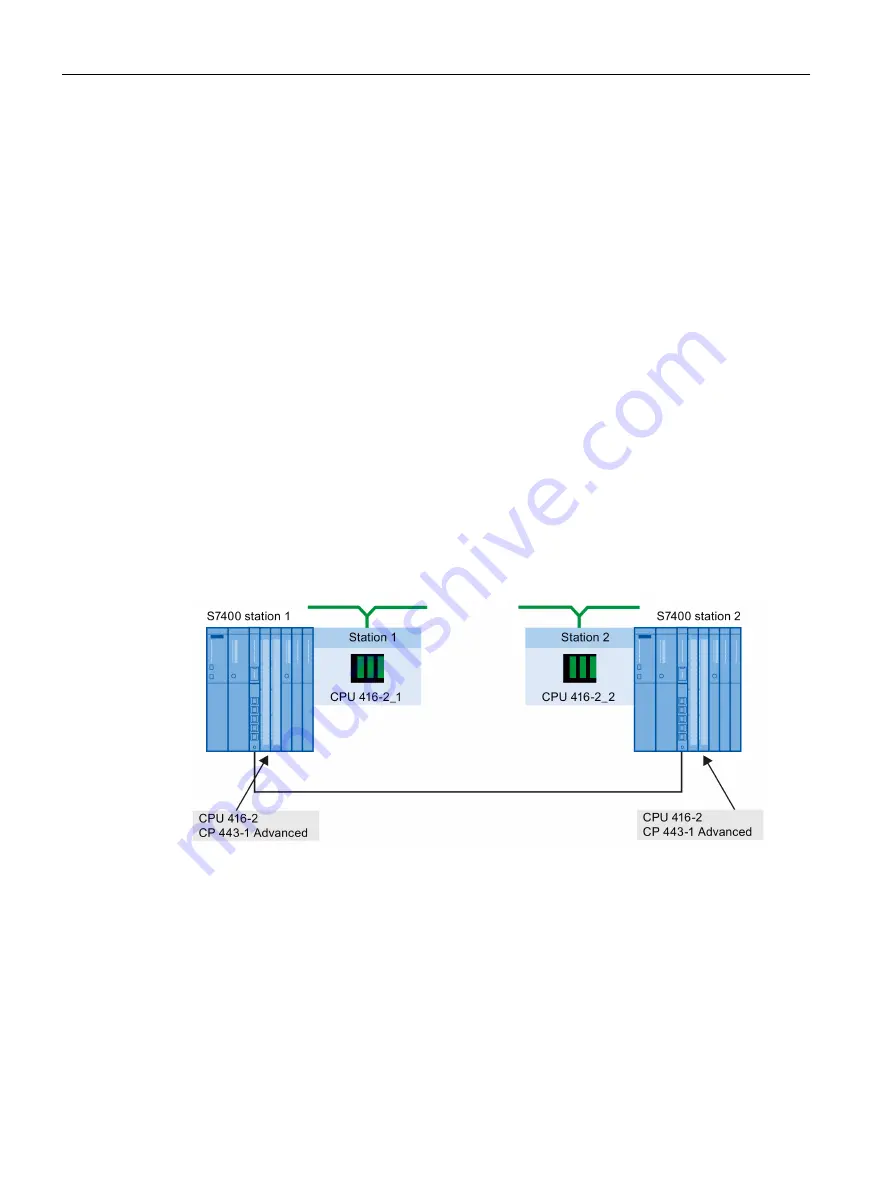
Performance data
2.6 Characteristic data for PROFINET CBA
CP 443-1 Advanced (GX30)
34
Manual, 03/2019, C79000-G8976-C256-05
Influences
The actual reaction time is subject to certain fluctuations. The achievable reaction times for
PROFINET CBA communication depend on the following factors:
●
Type of interconnection (cyclic or acyclic) and the transfer frequency or scanning
frequency;
●
The size of the configuration on the component interface (size of the interface DB for
PROFINET CBA);
●
CPU cycle time and CPU type;
●
Parallel operation with other types of communication types such as PROFINET IO or with
services such as online monitoring.
As a result, the reaction times for cyclic PROFINET CBA interconnections may exceed the
configured value for the transfer frequency. You should therefore check the reaction time
that can be achieved during commissioning and, if necessary, change the configuration.
Measurements in a sample configuration
Measurements were made to help you to estimate the influence of the configured transfer
frequency and the configuration (interface DB) with cyclic PROFINET CBA interconnections.
These measured results relate to a certain sample device configuration. Two S7400 stations
each with a CP 4431 Advanced were used (here: 6GK7 4431EX40). FB90 was used in the
user program (FB90 has better time characteristics than FB88).
Figure 2-2
Measurement setup with 2 S7-400s
Measurement principle:
Output data is generated by station 1 and interconnected as input data with station 2. The
input data is mirrored there and transferred over interconnections back to station 1 where it
is evaluated and forwarded etc. The time required for the individual transfer and evaluation
cycle is measured in station 1. This corresponds to approximately twice the reaction time
according to the definition above.
The CPU cycle time (cycle time of OB1) for this measurement is 6 ms.













































